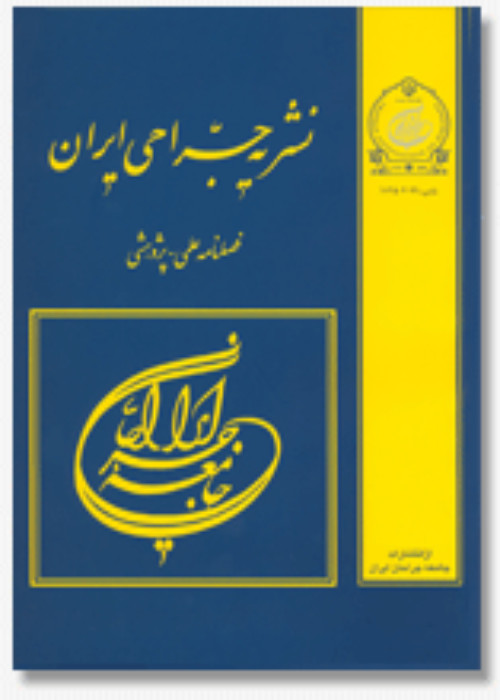The Impact of Various Kinds of Surgical Intervention on the Outcome of Patients Suffering from Chronic Subdural Hematoma: A Systematic Review and Pooled Analysis
Abstract:
Introduction &
Objective
Despite extensive research concering the more beneficial management of patients suffering from ‘chronic subdural hematoma’ (CSDH), controversy still exists about ‘which is the most appropriate treatment?’. The objective of this study is to review the literature on the various aspects of different surgical techniques used and their effect upon the outcome of patients suffering from CSDH. Materials and Methods
The search was done at Cochrane Central Registery of Controlled Trials, MEDLINE and EMBASE search engines up to the August 2007 with no language restrictions. Manual search and data banks of Web of Science and Scopus were also used for finding references included in the studies and in the literature reviews. Two independent observers performed study selection, methodological quality assessment (Maximum score 11) and data extraction in a blind and objective manner. Data on recurrence of CSDH were analyzed as pooled analysis by Poisson’s regression method and the relative risk of each variant of surgical procedures (type of craniostomy, using irrigation, using drainage) were calculated within a 95% confidence interval. For the analysis of variants of surgery that might increase the risk of morbidity and mortality, logistic regression method was used and the odd's ratios with 95% confidence interval were calculated. STATA v 9.1 software was used for the statistical analysis. Results
Nine randomized controlled trials (RCTs) could be allocated in the systematic review, comparing different surgical methods. All the included RCTs had poor qualities with a mean score of 4.1±1.7. The relative risk (RR) of recurrence of hematoma using carniostomy with drainage and carniostomy with irrigation were 2.3 and 5.9 respectively which were statistically significant. 'Drainage' and 'irrigation' had no statistically significant relationship with morbidity and mortality. The type of craniostomy had no effect upon recurrence. Conclusions
It looks quite probable that surgery is not a main factor affecting upon the outcome of treatment of CSDH but may act as a confounding factor. Accordingly, it is necessary to conduct properly designed prospective and randomized trials with adequate number of patients to evaluate the effective factors.Language:
Persian
Published:
Iranian Journal of Surgery, Volume:16 Issue: 1, 2008
Page:
12
magiran.com/p610396
دانلود و مطالعه متن این مقاله با یکی از روشهای زیر امکان پذیر است:
اشتراک شخصی
با عضویت و پرداخت آنلاین حق اشتراک یکساله به مبلغ 1,390,000ريال میتوانید 70 عنوان مطلب دانلود کنید!
اشتراک سازمانی
به کتابخانه دانشگاه یا محل کار خود پیشنهاد کنید تا اشتراک سازمانی این پایگاه را برای دسترسی نامحدود همه کاربران به متن مطالب تهیه نمایند!
توجه!
- حق عضویت دریافتی صرف حمایت از نشریات عضو و نگهداری، تکمیل و توسعه مگیران میشود.
- پرداخت حق اشتراک و دانلود مقالات اجازه بازنشر آن در سایر رسانههای چاپی و دیجیتال را به کاربر نمیدهد.
In order to view content subscription is required
Personal subscription
Subscribe magiran.com for 70 € euros via PayPal and download 70 articles during a year.
Organization subscription
Please contact us to subscribe your university or library for unlimited access!


